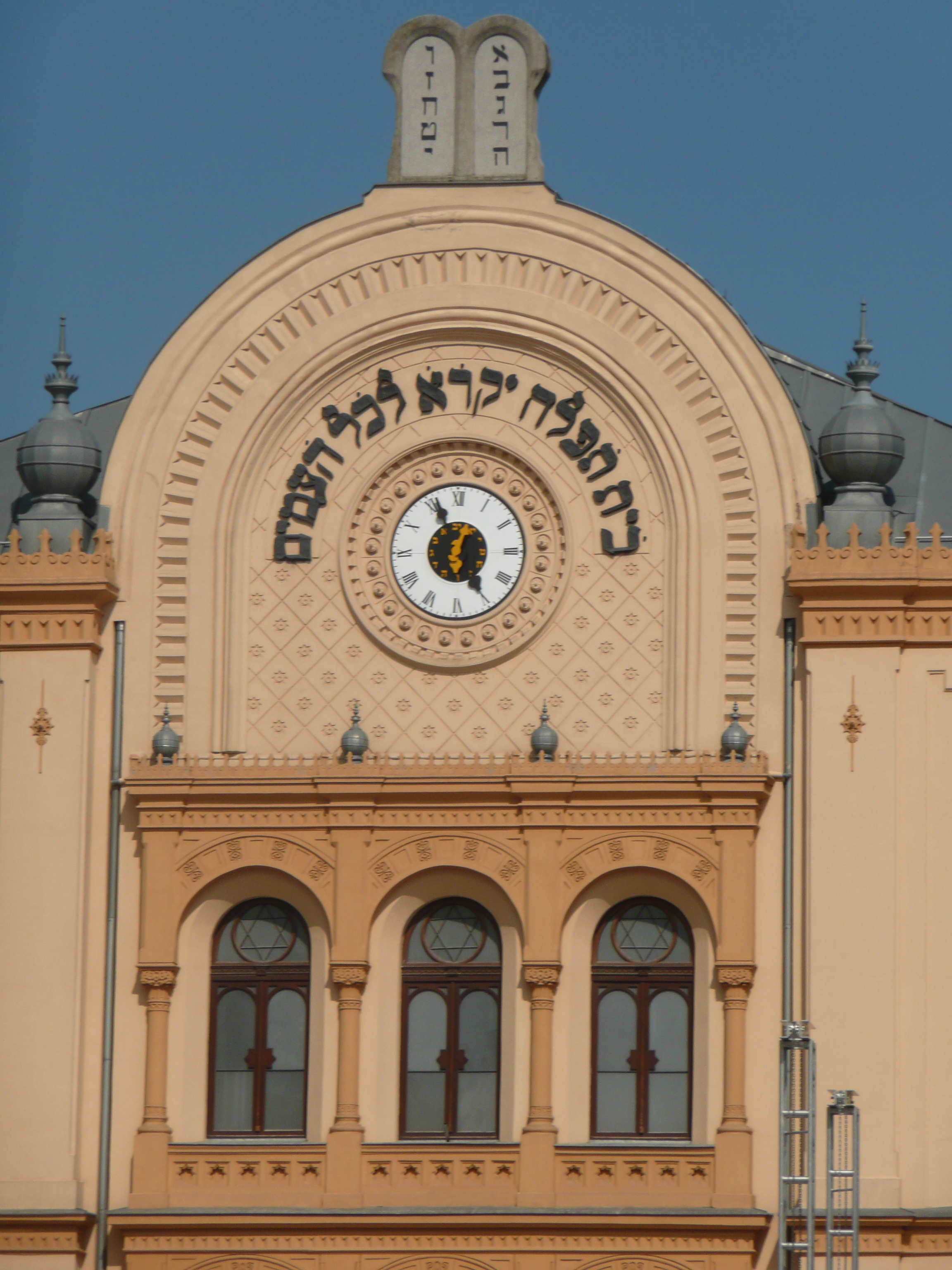
Synagogue Pecs, Hungary
The first mentioning of Jews on the territory of Austria proper goes back to the “Raffelstettner Customs Regulation” which was formulated between 903 and 906. The first Jews came as travelling merchants who traded between the Carolingian Empire, where they were already mentioned in the 8th century, and the Slav territories in the East. At that time several Jewish merchants had already settled on the territory of the duchy of Bavaria, of which Austria was a part. The Jews were expelled from the duchy of Austria several times. After the battle of Mohacs 1526 and the expansion of the Habsburg Empire into the Danube basin including now Bohemia, Moravia and Hungary many Jews who lived in the kingdom of Bohemia moved to Vienna and the surrounding lands, but they fled again to Bohemia after another pogrom of Viennese Jews between 1669 and 1671 because bigger Jewish communities had already existed there in the 16th century. In Moravia the Jews were expelled from the cities already in the 15th century and mostly lived on noble estates on the countryside. Also in Hungary bigger Jewish communities were established on the estates of the Hungarian nobility after they had been driven out of the cities. But most of the Jews in the Eastern Danube basin in the 17th century lived on the territory that was still part of the Osman Empire because the more tolerant attitude of the Osmans towards Jews guaranteed them relatively more legal security.
According to the new constitution in 1867 all Jews of the Habsburg Empire were citizens with equal rights and duties, so they could live where they wanted and move to wherever they wanted. They could be employed as civil servants, study at the universities and could own property. As a consequence many Jews migrated to Vienna: in 1860 6 200 Jews lived in Vienna, in 1880 72 588, which constituted 10.1 % of the population. This number comprises only Jews who declared themselves as Jews in a census, but there was a vast number of Jews who had quitted Judaism or converted and they do not figure in these statistics. Most of the Jews that migrated to Vienna in the first wave of migration came from Bohemia and were German-speaking and also saw themselves as representatives of the German culture which for them signified freedom, liberalism, humanism and progress. Most of them were well-off or had some start-up capital which contributed to their integration in Vienna. They searched and found success in the fields of trade and economy and their sons often proceeded into science and art. They formed an essential part of the cultural bloom of fin-de-siècle Vienna and other important cities of the empire, such as Prague, Budapest and Lemberg/Lvov/Lviv. The share of Jews in commerce, industry, science, medicine, law and the fine arts was very high (Freud, Mahler, Kraus, Werfel,..) The Jews from Hungary were poorer and more orthodox. For centuries very repressive laws had forbidden the access of Jews to many professions and educational institutions. Now that all doors were open, many developed tremendous educational and professional ambitions and they were matched with an indigenous population that had become inflexible, immobile and not very innovative. Education had always been very important in Jewish culture and so the assimilated Jews just transferred this reverence for education to secular institutions like grammar schools and universities. Statistics of 1912/13 in Vienna say that one third of pupils at grammar schools were Jews, 40 % of all medical students and a quarter of all law students. They preferred free-lance professions such as doctors and lawyers and entrepreneurship. Already in 1889 one half of the Viennese lawyers were of Jewish descent.
In the 1880 and 1890 a second massive Jewish migration arrived in Vienna, this time from Galicia, the very east of the empire. After the assassination of Tsar Alexander II the Russians held the Jews responsible and thousands fled from pogroms to the west across the border to Habsburg Galicia. This area was plagued by poverty, unemployment and hunger, so thousands left their Jewish “Stedtl” in Galicia and emigrated to European cities and overseas. In Vienna the number of Jews grew from 118,500 in 1890 to 175,300 in 1910, but the overall share of Jews had declined to 8.7 %, as the suburbs, where only very few Jews lived, were incorporated in the city territory of Vienna. The eastern Jews were completely different in appearance, language and lifestyle from all the Jewish immigrants so far. They were pedlars, menial workers or craftsmen. They spoke Yiddish, Russian and/or Polish and wore traditional clothes. The assimilated Viennese Jews were ashamed of these new arrivals because a deep cultural cleft separated them. But although the well-established Jews had assimilated they were compared and identified with the orthodox Jews from the east by the anti-Semites in Vienna. Despite their efforts of assimilation they now had to live in an atmosphere of constant assaults and insults. Lueger used anti-Semitism to win the hearts of the Viennese masses and to win elections. But only after a further wave of migration from Galicia and more repression and discrimination did the ideas of Theodor Herzl for establishing an independent Jewish state in Palestine gain some support from the Jewish community in Vienna.
Literature:
Brugger, Eveline e.a., Geschichte der Juden in Österreich, 2006
Die Türken in Wien. Geschichte einer jüdischen Gemeinde, Jüdisches Museum Wien 2010
Öhlinger, Walter, Geschichte Wiens. Wien im Aufbruch zur Moderne, Wien 1999
Riedl, Joachim ed., Wien Stadt der Juden, 2004
Roth, Joseph, Juden auf Wanderschaft, Wien 1927
Rumpler, Österreichische Geschichte 1804-1914. Eine Chance für Mitteleuropa. Bürgerliche Emanzipation und Staatsverfall in der Habsburgermonarchie, 199
Sandgruber, Roman, Ökonomie und Politik. Österreichische Wirtschaftsgeschichte vom Mittelalter bis zur Gegenwart, Wien 1995
Tietze, Hans, Die Juden Wiens. Geschichte, Wirtschaft, Kultur, 2007
